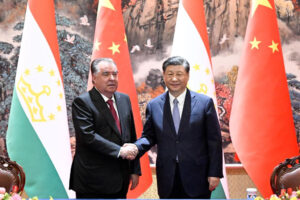WASHINGTON, D.C. — The work that U.S. Southern Command is best known for — counternarcotics — is only one challenge the often-overlooked theater faces.
“You need to pause and understand the threat in this area of operations is real and it goes well beyond counternarcotics,” said Maj. Gen. Dusty Shultz, the command’s director of intelligence.
Shultz spoke on a panel here Oct. 10 at the annual Association of the U.S. Army Meeting and Exposition alongside Gen. Laura Richardson, head of U.S. Southern Command and her staff to pitch the Latin America theater as a nearby test bed for new technology, training and a testing option for both industry and military units.
Richardson has characterized SOUTHCOM as the “first island chain” for the United States. The island chain reference is a nod to the geographical and strategic features of the Pacific, with a series of island chains semi-encompassing China’s mainland, spreading out into the wider Pacific.
The combined security needs and proximity to the United States make the theater a prime location for experimenting with and testing new technologies that could also be used in other theaters, officials said.
Beyond similar terrain features and geography, SOUTHCOM resembles other aspects of what the Army faces in the Indo-Pacific Theater — a collection of nations with varying degrees of capabilities and allegiances.
The intelligence officer said that of the $300 billion in illicit activity in the region by transnational criminal organizations, one-third, or $100 billion is related to narcotics trafficking. The other $200 billion comes from unregulated fishing, deforestation and mineral harvesting in U.S. partner nations. Much of that leads direction back to the Chinese government and military influence in the region, which is growing, she said.
At the same time, multiple online disinformation platforms run by Russian agents have large followings in Latin America, Shultz said. One example includes Sputnik Mundo, which has 31 million followers in the region.
Of the 31 nations in the area, 22 have projects with China in its “Belt and Road Initiative,” she said. The initiative is a series of infrastructure projects that many experts have called a kind of predatory lending program that the Chinese government has used to gain access and control in multiple countries across the world.
To simultaneously maintain security in the Western hemisphere, at the southern flank of the United States, and counter Chinese military incursions, SOUTHCOM leaders look to inject technology experimentation into its series of eight annual exercises.
Those include UNITAS and Tradewinds, two exercises that have existed for decades.
“We have willing partners and a permissive environment,” Greene said. In four hours or less, U.S. units can be in the region for training. And since it’s far from mainland China or Russia, exercises have less of a chance of escalating any existing tensions with those adversaries.
Within those exercises, Col. Anne-Marie Wiersgalla, communications director for the command, said that the region serves as an ideal testing arena for the Army’s Joint All Domain Command and Control, or JADC2 efforts.
That’s because the way that commanders must share intelligence in the region varies widely. The United States partners with two dozen nations, all with different levels of access to classified or secret information.
In the past, that’s meant “walled gardens” on networks, Wiersgalla said. The problem with those walled gardens is that they’re not flexible enough to adjust for the variety of mission sets.
When responding to a mass immigrant migration across multiple countries, the United States may need to share certain information it wouldn’t share in a counternarcotics operation with certain partners.
Operations in SOUTHCOM allow commanders to adjust the levels of access as needed, which is part of the “data-centric” approach that the Army needs when working with such information, the colonel said.
Efforts with partners in the region go beyond sharing Intelligence, Surveillance and Reconnaissance feeds.
Marine Col. Douglas Burke, head of SOUTHCOM logistics, said that Colombia is building out depot-level maintenance for its helicopter fleet. The plan now is to share that expertise with other partner nations in the area.
Source : ARMY TIMES
















